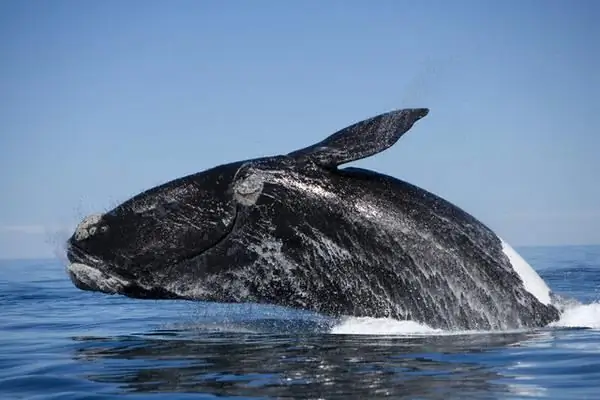Of the marine life, giants whales are among the closest to humans in terms of body structure. In 1982, on July 23, the International Whaling Commission voted to completely ban commercial whale hunting, and this day became known as World Whale and Dolphin Day. What do we know about whales?

Instructions
Step 1
To begin with, the whale is the largest mammal that exists on the globe. It belongs to the order of cetaceans and lives in sea water. The length of a blue whale can exceed 30 meters. This animal also weighs a lot - a mind-boggling 125 tons!
Step 2
Whales breathe air. Where do they find air in water? In order to inhale, they rise to the surface of the water every 5-10 minutes, and in order to completely change the air in the lungs, these mammals let a fountain through the breathing hole on the front of the head (this is how children usually draw a whale - with a fountain on their head). Some cetaceans can be underwater for up to three quarters of an hour.
Step 3
All cetaceans should be considered the descendants of mammals of the order of artiodactyls that went to sea from land. The structure of a whale's fin resembles a human hand, and some whales also have bones in the "place of their hind legs."
Step 4
The whale is able to sing! This is the only mammal on earth, except, of course, humans, that has such an ability. The longest whale "song" lasts 30 minutes, and the shortest only six.
Step 5
The blue whale does not have teeth in its mouth, but several hundred fatal plates, whalebones. The whale's lunch looks like this: it opens its mouth and shrimps, mollusks and fish pass into it. It closes its mouth and forcibly pushes the water out of the mouth through the whalebone, as through a sieve, thus keeping the prey inside.







